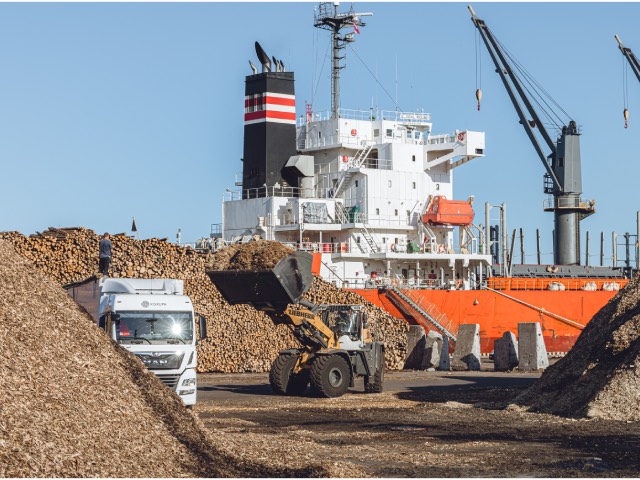Despite the turmoil of the pandemic, the global container crisis, as well as the unstable geopolitical situation in the neighboring countries, the first half of the year ended with stable results in the port of Riga, with stevedoring companies handling 10.15 million tons of various cargo. Without taking into account fossil energy resources (coal and oil products), cargo turnover indicators in the six months of 2021 have increased by + 1.3% or 112 thousand tons, currently reaching 8.88 million tons or 88% of all cargo volume. Currently the largest cargo segment in the Riga Port cargo portfolio is forestry cargo. The total forestry cargo turnover in the first half of the current year has reached 3.2 million tons (+ 8.2%). This volume includes 0.6 million tons of various timber products handled in June, which is the highest monthly indicator in the history of the Port of Riga.
Handling of pellets has an important position (38%) in the port forestry cargo group, and June was a record month for pellet handling. “There is a growing global trend to replace fossil fuel with renewables, including wood pellets. In addition, a renewal of reserves in Europe for the autumn / winter heating season is currently underway and high-quality Latvian pellets are in high demand,” commented the analysts of the Freeport of Riga Authority “The competitive advantage of the Port of Riga is the railway and road transport infrastructure, berths where we can accommodate large Panamax vessels, as well as the high quality of the provided services. Today not only local pellet producing companies are our clients, currently cargo of Lithuanian and Estonian origin is also transported to the port of Riga. This trend fosters further growth of wood pellet processing volumes”, commented Jānis Kasalis, the Board member Executive Director of the SIA “Rīgas Universālais Termināls”.
In the first half of the year, the largest increase was recorded for agricultural cargo, the volume of which in the port has increased by more than one fifth (+ 22.5%) and in the last year grain cargo has retained its position among the three largest cargo groups handled in the port. Furthermore, Latvian grain producers more often prefer to export their products via the port of Riga – the trend has been supported by the transaction concluded in April, as a result of which the Agricultural Services Cooperative Company LATRAPS has acquired a 50% + 1 share in the dry bulk cargo terminal “Alpha osta”.
The container cargo segment is still struggling to overcome the crisis caused by the pandemic, resulting in the long-running shortage of empty containers around the world, as well as rising transportation costs. And the port of Riga is also facing those negative outcomes – in the first half of the year 2.06 million tons of container cargo was handled in the port, which is by 8.4% less than last year.
“Working together – when the Freeport of Riga Authority is arranging and developing the port infrastructure and the Riga port entrepreneurs are providing professional and efficient operation and investing in their development, cargo handling and storage technologies and IT solutions, – we can enhance the port’s development and competitiveness potential, attracting additional cargo and investment, as well as strengthen the Port of Riga positions in the global market ”, commented Ansis Zeltins, the Freeport of Riga CEO.
The Freeport of Riga is the largest port in Latvia and the second largest port in the Baltic States, where high-quality services are provided by about 200 private companies working in the port, including 36 cargo handling terminals. The Port of Riga business cluster employs more than 4,000 people.
According to the think- tank CERTUS, each ton of cargo handled at the Freeport of Riga contributes to Latvia’s GDP in the amount of 10.7 EUR. Thus by handling 23,7 million tons of cargo, the Freeport of Riga cluster increased Latvia’s GDP by EUR 250 million. The companies of the port cluster pay more than 30 million EUR in taxes every year.









































